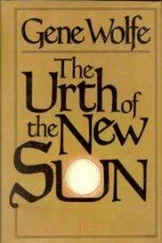Tom Wolfe - The Right Stuff
Здесь есть возможность читать онлайн «Tom Wolfe - The Right Stuff» весь текст электронной книги совершенно бесплатно (целиком полную версию без сокращений). В некоторых случаях можно слушать аудио, скачать через торрент в формате fb2 и присутствует краткое содержание. Жанр: Современная проза, на английском языке. Описание произведения, (предисловие) а так же отзывы посетителей доступны на портале библиотеки ЛибКат.
- Название:The Right Stuff
- Автор:
- Жанр:
- Год:неизвестен
- ISBN:нет данных
- Рейтинг книги:3 / 5. Голосов: 1
-
Избранное:Добавить в избранное
- Отзывы:
-
Ваша оценка:
- 60
- 1
- 2
- 3
- 4
- 5
The Right Stuff: краткое содержание, описание и аннотация
Предлагаем к чтению аннотацию, описание, краткое содержание или предисловие (зависит от того, что написал сам автор книги «The Right Stuff»). Если вы не нашли необходимую информацию о книге — напишите в комментариях, мы постараемся отыскать её.
The Right Stuff — читать онлайн бесплатно полную книгу (весь текст) целиком
Ниже представлен текст книги, разбитый по страницам. Система сохранения места последней прочитанной страницы, позволяет с удобством читать онлайн бесплатно книгу «The Right Stuff», без необходимости каждый раз заново искать на чём Вы остановились. Поставьте закладку, и сможете в любой момент перейти на страницу, на которой закончили чтение.
Интервал:
Закладка:
Well!—who doesn't know that voice! And who can forget it!—even after he is proved right and the emergency is over.
That particular voice may sound vaguely Southern or Southwestern, but it is specifically Appalachian in origin. It originated in the mountains of West Virginia, in the coal country, in Lincoln County, so far up in the hollows that, as the saying went, "they had to pipe in daylight." In the late 1940's and early 1950's this up-hollow voice drifted down from on high, from over the high desert of California, down, down, down, from the upper reaches of the Brotherhood into all phases of American aviation. It was amazing. It was Pygmalion in reverse. Military pilots and then, soon, airline pilots, pilots from Maine and Massachusetts and the Dakotas and Oregon and everywhere else, began to talk in that poker-hollow West Virginia drawl, or as close to it as they could bend their native accents. It was the drawl of the most righteous of all the possessors of the right stuff: Chuck Yeager.
Yeager had started out as the equivalent, in the Second World War, of the legendary Frank Luke of the 27th Aero Squadron in the First. Which is to say, he was the boon-docker, the boy from the back country, with only a high-school education, no credentials, no cachet or polish of any sort, who took off the feed-store overalls and put on a uniform and climbed into an airplane and lit up the skies over Europe.
Yeager grew up in Hamlin, West Virginia, a town on the Mud River not far from Nitro, Hurricane Whirlwind, Salt Rock, Mud, Sod, Cram, Leet, Dollie, Ruth, and Alum Creek. His father was a gas driller (drilling for natural gas in the coalfields), his older brother was a gas driller, and he would have been a gas driller had he not enlisted in the Army Air Force in 1941 at the age of eighteen. In 1943, at twenty, he became a flight officer, i.e., a non-com who was allowed to fly, and went to England to fly fighter planes over France and Germany. Even in the tumult of the war Yeager was somewhat puzzling to a lot of other pilots. He was a short, wiry, but muscular little guy with dark curly hair and a tough-looking face that seemed (to strangers) to be saying: "You best not be lookin' me in the eye, you peckerwood, or I'll put four more holes in your nose." But that wasn't what was puzzling. What was puzzling was the way Yeager talked. He seemed to talk with some older forms of English elocution, syntax, and conjugation that had been preserved uphollow in the Appalachians. There were people up there who never said they disapproved of anything, they said: "I don't hold with it." In the present tense they were willing to help out, like anyone else; but in the past tense they only holped . "H'it weren't nothin' I hold with, but I holped him out with it, anyways."
In his first eight missions, at the age of twenty, Yeager shot down two German fighters. On his ninth he was shot down over German-occupied French territory, suffering flak wounds; he bailed out, was picked up by the French underground, which smuggled him across the Pyrenees into Spain disguised as a peasant. In Spain he was jailed briefly, then released, whereupon he made it back to England and returned to combat during the Allied invasion of France. On October 12, 1944, Yeager took on and shot down five German fighter planes in succession. On November 6, flying a propeller-driven P-51 Mustang, he shot down one of the new jet fighters the Germans had developed, the Messerschmitt-262, and damaged two more, and on November 20 he shot down four FW-190s. It was a true Frank Luke-style display of warrior fury and personal prowess. By the end of the war he had thirteen and a half kills. He was twenty-two years old.
In 1946 and 1947 Yeager was trained as a test pilot at Wright Field in Dayton. He amazed his instructors with his ability at stunt-team flying, not to mention the unofficial business of hassling. That plus his up-hollow drawl had everybody saying, "He's a natural-born stick 'n' rudder man." Nevertheless, there was something extraordinary about it when a man so young, with so little experience in flight test, was selected to go to Muroc Field in California for the XS-1 project.
Muroc was up in the high elevations of the Mojave Desert. It looked like some fossil landscape that had long since been left behind by the rest of terrestrial evolution. It was full of huge dry lake beds, the biggest being Rogers Lake. Other than sagebrush the only vegetation was Joshua trees, twisted freaks of the plant world that looked like a cross between cactus and Japanese bonsai. They had a dark petrified green color and horribly crippled branches. At dusk the Joshua trees stood out in silhouette on the fossil wasteland like some arthritic nightmare. In the summer the temperature went up to 110 degrees as a matter of course, and the dry lake beds were covered in sand, and there would be windstorms and sandstorms right out of a Foreign Legion movie. At night it would drop to near freezing, and in December it would start raining, and the dry lakes would fill up with a few inches of water, and some sort of putrid prehistoric shrimps would work their way up from out of the ooze, and sea gulls would come flying in a hundred miles or more from the ocean, over the mountains, to gobble up these squirming little throwbacks. A person had to see it to believe it: flocks of sea gulls wheeling around in the air out in the middle of the high desert in the dead of winter and grazing on antediluvian crustaceans in the primordial ooze.
When the wind blew the few inches of water back and forth across the lake beds, they became absolutely smooth and level. And when the water evaporated in the spring, and the sun baked the ground hard, the lake beds became the greatest natural landing fields ever discovered, and also the biggest, with miles of room for error. That was highly desirable, given the nature of the enterprise at Muroc.
Besides the wind, sand, tumbleweed, and Joshua trees, there was nothing at Muroc except for two quonset-style hangars, side by side, a couple of gasoline pumps, a single concrete runway, a few tarpaper shacks, and some tents. The officers stayed in the shacks marked "barracks," and lesser souls stayed in the tents and froze all night and fried all day. Every road into the property had a guardhouse on it manned by soldiers. The enterprise the Army had undertaken in this godforsaken place was the development of supersonic jet and rocket planes.
At the end of the war the Army had discovered that the Germans not only had the world's first jet fighter but also a rocket plane that had gone 596 miles an hour in tests. Just after the war a British jet, the Gloster Meteor, jumped the official world speed record from 469 to 606 in a single day. The next great plateau would be Mach 1, the speed of sound, and the Army Air Force considered it crucial to achieve it first.
The speed of sound, Mach 1, was known (thanks to the work of the physicist Ernst Mach) to vary at different altitudes, temperatures, and wind speeds. On a calm 60-degree day at sea level it was about 760 miles an hour, while at 40,000 feet, where the temperature would be at least sixty below, it was about 660 miles an hour. Evil and baffling things happened in the transonic zone, which began at about.7 Mach. Wind tunnels choked out at such velocities. Pilots who approached the speed of sound in dives reported that the controls would lock or "freeze" or even alter their normal functions. Pilots had crashed and died because they couldn't budge the stick. Just last year Geoffrey de Havilland, son of the famous British aircraft designer and builder, had tried to take one of his father's DH 108s to Mach 1. The ship started buffeting and then disintegrated, and he was killed. This led engineers to speculate that the shock waves became so severe and unpredictable at Mach 1, no aircraft could survive them. They started talking about "the sonic wall" and "the sound barrier."
Читать дальшеИнтервал:
Закладка:
Похожие книги на «The Right Stuff»
Представляем Вашему вниманию похожие книги на «The Right Stuff» списком для выбора. Мы отобрали схожую по названию и смыслу литературу в надежде предоставить читателям больше вариантов отыскать новые, интересные, ещё непрочитанные произведения.
Обсуждение, отзывы о книге «The Right Stuff» и просто собственные мнения читателей. Оставьте ваши комментарии, напишите, что Вы думаете о произведении, его смысле или главных героях. Укажите что конкретно понравилось, а что нет, и почему Вы так считаете.











